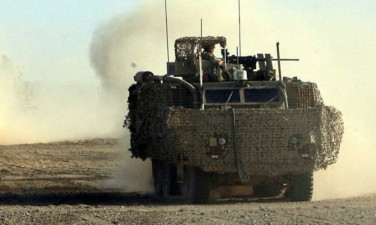Three Royal Regiment of Scotland soldiers have been killed in a roadside bomb attack in Afghanistan.
The soldiers, from The Royal Highland Fusiliers, 2nd Battalion The Royal Regiment of Scotland, were on a routine patrol when their vehicle was struck by an improvised explosive device in Nahr-e Saraj district, Helmand Province, on Tuesday.
They received immediate medical attention and were evacuated by air to the Military Hospital at Camp Bastion but could not be saved, the MOD said. Their next of kin have been informed.
Major Richard Morgan, spokesman for Task Force Helmand, said: “It is with deep sadness that I must confirm that three soldiers from The Royal Highland Fusiliers, 2nd Battalion The Royal Regiment of Scotland, have died after theirvehicle was struck by an improvised explosive device in the Nahr-e Saraj district of Helmand Province.
“Their deaths come as a great loss to all those serving in Task Force Helmand. Our thoughts and prayers are extended to their family and friends at this difficult time.”
A Ministry of Defence spokesman said the incident underlines the continued danger faced by soldiers as they prepare to pull out of Afghanistan in 2014.
“Our thoughts are with the families who have lost loved ones in this incident, which underlines the threats faced by our personnel as they continue to hand over security operations to their Afghan counterparts ahead of UK combat operations concluding by the end of next year,” he said. “Security in Helmand, where most UK forces are based, is steadily improving with Afghan forces already responsible for the bulk of the province – but the environment in which our troops operate remains risky and dangerous, including the threat of improvised explosive devices and insurgent attack.
“We will continue to do all we can to minimise these risks but they can never be removed entirely.”
The deaths take to 444 the number of UK service members who have lost their lives since operations in Afghanistan began in October 2001. Six have now died in 2013.
Officials first reported the deadly blast yesterday, which also killed nine Afghans.
The attack came on the third day of what the Taliban has called its spring offensive. Other blasts throughout the country killed nine civilians and a police commander.
In past years, spring has marked a significant upsurge in fighting between the Taliban and Nato forces with their local allies.
The insurgents warned they would infiltrate enemy ranks to conduct “insider attacks” and target military and diplomatic sites with suicide bombers.
This fighting season is a key test, as the international coalition is scheduled to hand over security responsibilities to Afghan forces next year.
